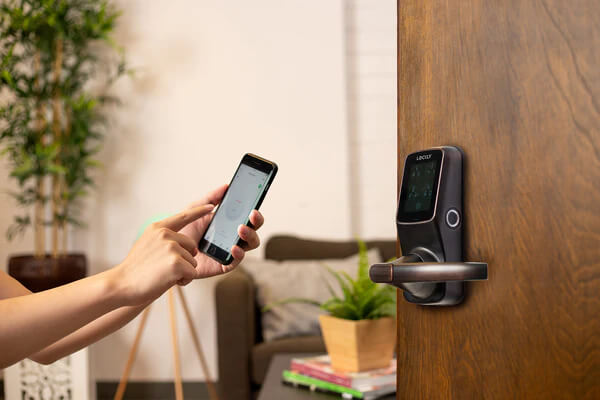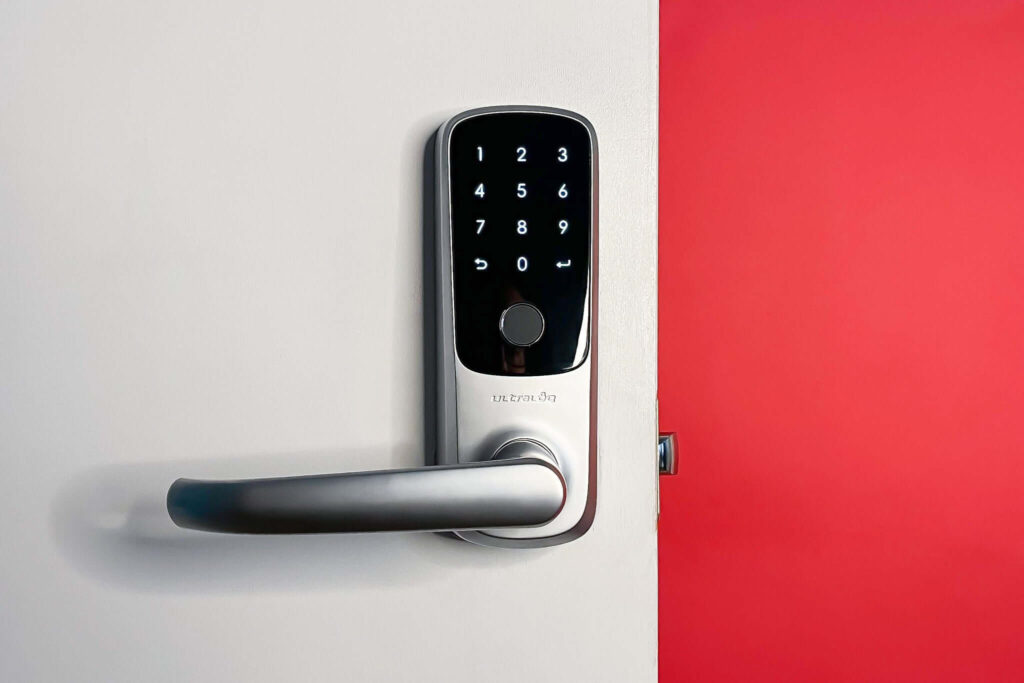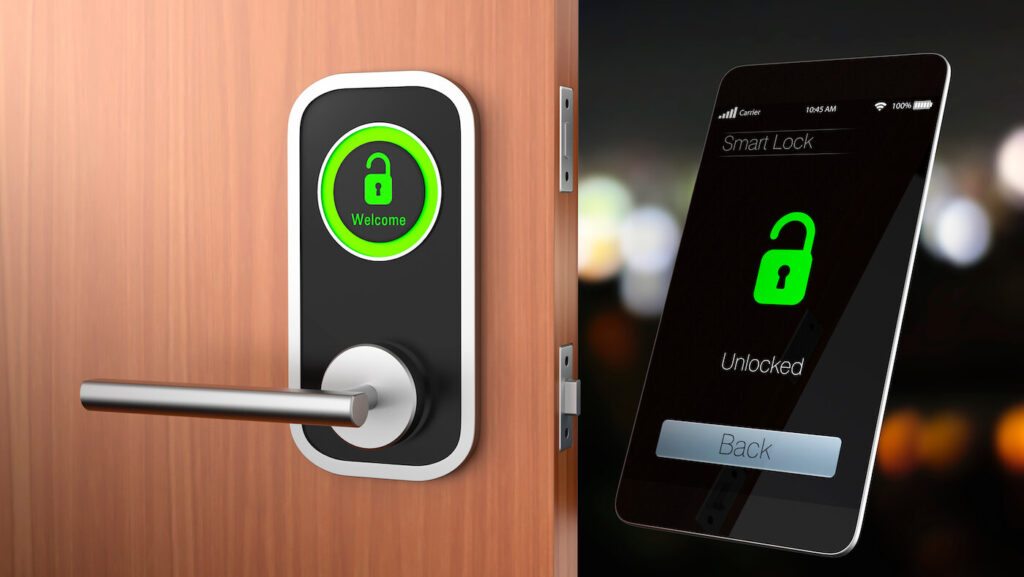Smart locks, the knights in shining armor of modern home security, have revolutionized the way we protect our abodes. In the hustle and bustle of Brooklyn, New York, where every second counts, these high-tech guardians bring a blend of convenience and robust security to your doorstep. But hey, before you start imagining a complicated installation process that requires an engineering degree, take a breath. We’re here to guide you through the maze of smart lock installation and troubleshooting like your trusted GPS through the streets of Brooklyn.
Smart Locks Installation

Pre-Installation Preparation
Before you start wrestling with wires and gadgets, a bit of groundwork can save you from future headaches:
- Assessing Compatibility with Existing Doors: Check if your door is ready for a smart makeover. Different locks suit different doors, so ensure compatibility.
- Checking Wi-Fi Connectivity: Smart locks love to chat, and they need a good Wi-Fi connection for that. Make sure your signal is strong where your lock will reside.
- Verifying Power Source Options: Know your lock’s appetite for power. Some sip energy like a green smoothie, while others demand a full-course meal. Decide if batteries or hardwiring is your lock’s preferred diet.
Step-by-Step Installation Process
Now, let’s get our hands dirty with the installation process. Fear not, it’s more like assembling a sandwich than decoding rocket science:
- Mounting the Smart Lock on the Door: Attach the lock securely following the manufacturer’s instructions. It’s like fitting a puzzle piece, but this piece protects your castle.
- Connecting to Power Source: Whether it’s batteries or wires, feed your lock the energy it craves. A well-fed lock is a happy lock.
- Establishing Wi-Fi Connection: Pairing your lock with Wi-Fi is the secret handshake. Follow the steps on the manual, and soon your lock will be mingling in the digital realm.
- Configuring User Access and Permissions: Who gets the golden ticket to your fortress? Set up user profiles, assign access levels, and ensure only the chosen ones have the keys – virtual ones.
- Testing the Smart Lock Functionality: Time for the litmus test. Try opening and closing the door with your newfound digital powers. If it works smoothly, you’re officially a tech maestro!
Troubleshooting Tips during Installation
Even the best plans hit a snag sometimes. Here’s a quick troubleshooter to keep the installation process hiccup-free:
- Common Installation Issues: Check for loose connections, misplaced components, or anything that looks out of place. A second pair of eyes can be a game-changer.
- Solutions for Connectivity Problems: If your lock is playing hide-and-seek with the Wi-Fi, ensure the signal is robust and troubleshoot connectivity issues.
- Addressing Power Source Concerns: Battery issues? Double-check the polarity and replace them if needed. If hardwiring, ensure the electrical connections are snug.
Remember, installing a smart lock is like baking – follow the recipe, and your home security cake will be a delightful success!
Smart Locks Configuration
Mobile App Setup
Now that your smart lock is physically in place, let’s get it to dance to your smartphone’s tune:
- Downloading and Installing the App: Head over to your device’s app store, find the smart lock app, and hit that download button. Once downloaded, install it faster than a New York minute.
- Creating a User Account: Open the app, sign up, and create your account. It’s your backstage pass to controlling the lock’s every move.
- Pairing the Smart Lock with the Mobile App: Just like connecting Bluetooth earbuds, pair your lock with the app. Follow the on-screen instructions, and voilà – they’re now the best of friends.
Setting User Access and Permissions
The power to grant or deny access lies in your fingertips. Let’s wield that power responsibly:
- Adding and Deleting User Profiles: Need to grant access to family, friends, or your neighbor who waters the plants? Add their profiles. Moving on? Delete the ones who’ve overstayed their welcome.
- Assigning Access Levels: Not everyone gets the keys to the kingdom. Assign access levels – perhaps the kids only get in during daylight hours. It’s your digital realm; set the rules.
- Configuring Temporary Access for Guests: Hosting a weekend soirée? Temporarily grant access to your guests. It’s hospitality in the digital age.
Syncing with Other Smart Home Devices
Why stop at a solo performance? Let your smart lock join the smart home orchestra:
- Integration with Smart Home Hubs: If you have a smart home hub, sync your lock with it. Harmony is key – one command to rule them all.
- Connecting to Voice Assistants (e.g., Alexa, Google Assistant): Embrace the future of voice commands. Link your smart lock to Alexa, Google Assistant, or any voice assistant that strikes your fancy. “Lock the door, Alexa!” – it’s that simple.
Smart Locks Maintenance

Regular System Updates
- Firmware Updates: Just like your smartphone or computer, your smart lock needs its regular dose of updates. Check for firmware updates through the app or the manufacturer’s website. Up-to-date firmware ensures optimal performance and security.
- App Updates: Speaking of updates, keep the app on your smartphone in its A-game. App updates often bring new features, bug fixes, and enhanced security. Set your app to auto-update, and you’ll always have the latest and greatest.
Battery Management
- Monitoring Battery Life: Your smart lock’s life force lies in its batteries. Monitor their life like a hawk. Most smart locks will notify you when batteries run low, but it doesn’t hurt to check occasionally. A dead battery is an unlocked door waiting to happen.
- Replacing Batteries: When the low battery warning pops up, don’t procrastinate. Replace the batteries promptly, following the manufacturer’s recommendations. Fresh batteries keep your lock robust and ready for action.
Cleaning and Physical Maintenance
- Removing Dust and Debris: Dust and debris can gunk up the gears. Periodically clean the lock with a gentle brush or compressed air. A clean lock is a happy lock.
- Lubricating Moving Parts: A squeaky wheel might get the grease, but your smart lock prefers silicone-based lubricants. Apply a dab to moving parts like the latch to keep things running smoothly. A well-lubricated lock lasts longer.
Troubleshooting Common Issues
Connectivity Problems
- Wi-Fi Issues: If your smart lock seems out of touch, check your Wi-Fi signal strength. Ensure the lock is within the Wi-Fi range and that there are no interference-causing devices nearby. A Wi-Fi extender might be your digital wingman in such cases.
- Bluetooth Connectivity Problems: For Bluetooth-enabled locks, ensure your smartphone’s Bluetooth is turned on and in proximity to the lock. Sometimes, a simple toggle of the Bluetooth switch can work wonders. If issues persist, consider re-pairing the devices.
Software Glitches
- App Crashes: Apps can be moody sometimes. If your smart lock app is throwing a tantrum, first try force-closing and reopening it. If the issue persists, uninstall and reinstall the app. It’s the digital equivalent of turning it off and on again.
- System Freezes: If your lock is frozen in time, check for any ongoing firmware updates. If none are in progress, a hard reset might be necessary. Consult the manual for specific instructions on giving your lock a reboot.
Hardware Malfunctions
- Motor Failures: If your lock’s motor is acting like it pulled an all-nighter, check for obstructions around the lock. Clear any debris, and if the problem persists, it might be time to call in the manufacturer’s support.
- Sensor Calibration Issues: Sensors are the eyes and ears of your smart lock. If they’re not playing nice, recalibrate them according to the manufacturer’s instructions. Often, a simple recalibration can resolve sensor-related hiccups.
Security Considerations

Protecting Against Hacking Attempts
- Strong Password Policies: Your smart lock’s first line of defense is a robust password. Avoid ‘123456’ or ‘password’ – get creative. Mix uppercase, lowercase, numbers, and symbols to create a digital fortress that even the most skilled hackers can’t breach.
- Two-Factor Authentication: Double up on security with two-factor authentication (2FA). This adds an extra layer of protection, requiring a secondary verification step, like a code sent to your mobile device. It’s like having a bouncer at the entrance to your digital party.
Emergency Access Protocols
- Backup Keys or Manual Overrides: Technology can be unpredictable. Always have a backup plan, whether it’s a physical key or an alternative method to access your home. This is your fail-safe in case the digital realm throws a curveball.
- Remote Locking in Case of Lost Devices: If your smartphone, the key to your digital kingdom, goes missing, act swiftly. Most smart lock apps allow remote locking. Log in from another device, and with a few taps, secure your home even from afar.
The Future of Smart Locks and Home Security
As technology continues to evolve, so will smart locks. Keep an eye on firmware updates, new features, and emerging trends. The journey doesn’t end with installation; it’s an ongoing adventure into the future of home security.
In a world where doors aren’t just barriers but gateways to connected living, your smart lock stands as a testament to your commitment to both convenience and security.
So, here’s to you – the guardian of the digital realm, the troubleshooter extraordinaire, and the keeper of the keys, both physical and virtual. May your home be secure, your smart lock be ever vigilant, and your digital journey be filled with seamless access and peace of mind. Cheers to the future of home security!
Smart Locks FAQ
Q1: How do I know if my door is compatible with a smart lock?
A: Most smart lock manufacturers provide compatibility information on their websites. Measure your door’s dimensions and check for compatibility with the specific smart lock model. Additionally, ensure your door has a standard deadbolt or latch, as smart locks typically replace or retrofit existing hardware.
Q2: Can I install a smart lock myself, or do I need a professional?
A: Smart locks are designed for DIY installation, and many come with step-by-step instructions. If you’re comfortable with basic tools and following instructions, self-installation is feasible. However, if you have concerns or encounter difficulties, seeking professional help is always an option.
Q3: What if I lose my smartphone or device with the smart lock app?
A: Most smart lock apps provide a remote locking feature. Log in from another device, access the app, and lock or disable the smart lock temporarily. Additionally, having a backup physical key or alternative access method can serve as a fail-safe in case of lost devices.
Q4: How often should I update the firmware of my smart lock?
A: Regular firmware updates are crucial for security and optimal performance. Check for updates at least every six months or as advised by the manufacturer. Set up notifications in the smart lock app to stay informed about the latest firmware releases.
Q5: What should I do if my smart lock is unresponsive?
A: Start by checking the battery level and replacing them if necessary. Ensure the lock is within the Wi-Fi or Bluetooth range and that there are no obstructions. If issues persist, consult the troubleshooting section of the user manual or contact the manufacturer’s support.
Q6: Can I integrate my smart lock with other smart home devices?
A: Yes, many smart locks offer integration with smart home hubs and voice assistants like Alexa or Google Assistant. Check the compatibility list provided by the smart lock manufacturer and follow the integration instructions in the respective apps.
Q7: How can I enhance the security of my smart lock?
A: Implement a strong password for your smart lock app, utilizing a mix of uppercase, lowercase, numbers, and symbols. Enable two-factor authentication for an extra layer of security. Additionally, have backup keys or manual overrides in case of emergencies.
Q8: What’s the average battery life for smart locks?
A: Battery life varies among smart lock models. On average, most smart locks using batteries require replacement every 6-12 months. Refer to the user manual for specific information on your smart lock’s power consumption and battery life.
Q9: Can I use a smart lock on any type of door?
A: Smart locks are designed to be versatile, but compatibility may vary. Ensure your door has a standard deadbolt or latch and check the manufacturer’s recommendations for door thickness and compatibility. Some smart locks may not be suitable for certain door materials or designs.
Q10: Is it possible to share temporary access with guests?
A: Yes, most smart locks allow you to create temporary access codes or send invitations through the app. This is a convenient way to grant access to guests, service providers, or temporary visitors without compromising your permanent access settings. Refer to your smart lock’s user manual for specific instructions.